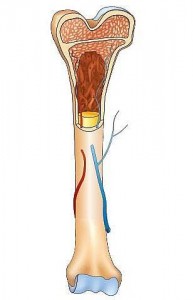Bones are a common place for spreading cancer cells to settle in and start growing. Get the basics on bone metastasis, aka bone mets.
A cancer diagnosis is difficult enough, yet about 50% of people diagnosed with the disease will face another challenge: bone metastasis. That’s when cells travel away from the initial tumor and settle in bone. While doctors can’t predict who will get metastases they are able to offer new hope in treating them.
What is metastasis?
Bone metastasis occurs when cancer cells break away from a primary tumor and enter the blood and lymph vessels .
Signs of bone metastases
Symptoms include:
- Bone pain
- Fractures
- High calcium levels
- Numbness and weakness in the abdomen and legs
How long the process of metastasis takes can vary greatly: Sometimes bone mets are a patient’s first sign of cancer; other times, they occur years after initial treatment.
Certain cancers—most notably prostate, breast, lung, thyroid and kidney—are more likely to spread to bone. In fact, prostate and breast cancers account for about 80% of cases, according to research in the journal Oncology. And between 65% and 75% of patients with advanced prostate or breast cancer develop bone mets, while about 40% of advanced lung cancer patients do. Bones near the center of the body—like the spine and pelvis—are more likely to be affected.
It’s important to note that bone mets are different from bone cancer: Bone mets are made up of cells from the original cancer site. So, for example, if breast cancer has spread to the bones, the tumor is made up of breast cancer cells and it’s known as metastatic breast cancer.
How bones are affected
Bones are constantly renewing and rebuilding themselves, thanks to two different kinds of cells: osteoblasts, which are responsible for creating new bone, and osteoclasts, which break down old bone. Cancer cells can send both types of cells into overdrive, causing either an abnormal buildup of bone or small holes that weaken bones.
When doctors suspect metastasis, they typically order body-imaging tests, like X-rays or MRIs, and may run blood tests.
Hope for the future
While bone mets are usually incurable, current treatments can shrink or stop the growth of tumors. And new therapies in development may soon offer more hope. Researchers are learning more about cancer cells—and that means doctors will be able to determine how to stop them.”


